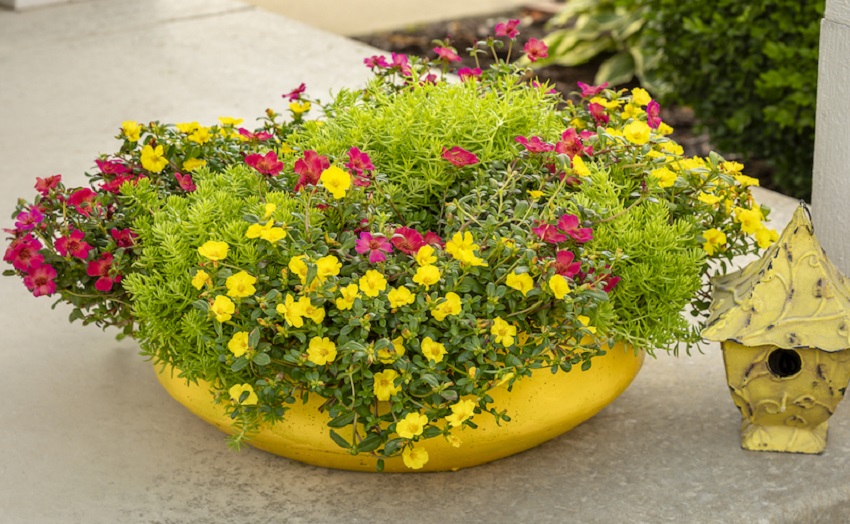Purslane is a flowering plant that is native to Europe and Asia. It is popularly known for its culinary and medicinal benefits. However, maintaining a beautiful garden of purslane does not come easy, and it requires a bit of knowledge and care to achieve this. Therefore, in this article, we will delve into the ways to successfully grow and care for purslane plants.
What is Purslane?
Purslane (Portulaca oleracea) is a member of the Portulacaceae family, and it is a summer annual plant. It is native to Europe and Asia, but it is now widespread throughout the world. Despite its popularity, Purslane is not the only plant that can brighten up your garden. Have you considered adding a black dragon rose to your collection? Purslane has succulent and plump leaves, and its flowers are bright and showy.
Soil Requirements
For purslane plants to flourish, they require well-drained soil that is fertile, with a pH range of 6.0 to 7.0. Since purslane is a succulent plant, it tends to store water in its tissues, which means that the soil needs to have the ability to drain out excess water.
Watering Requirements
When it comes to watering purslane plants, it is crucial to water them well, especially during hot and dry weather conditions. Watering should be moderate, and it needs to be done when the soil starts to feel dry to the touch. Generally, watering once a week is enough for purslane plants.
Light Requirements
Purslane plants require full sunlight to grow well. Therefore, when planting these plants, ensure that they are exposed to full sunlight for at least six hours a day. In addition, purslane plants can tolerate high temperatures, but they do not do well in frost or low temperatures.
Fertilizing Requirements
Purslane plants do not require much fertilization as they can grow well in soil with enough nutrients. However, you can choose to fertilize once or twice, especially if the soil lacks enough nutrients. The ideal type of fertilizer for purslane plants is one that is low in nitrogen and high in potassium.
Pruning Requirements
Pruning is essential to ensure that the purslane plant maintains a desirable shape and size. It also promotes the growth of new flowers and leaves. It is recommended to prune purslane plants when the flowers start to wilt. This keeps the plant looking tidy and well-maintained.
Pests and Diseases
Pests and diseases are prevalent in purslane plants. The common pests that affect this plant include spider mites, aphids, and mealybugs. These pests can be controlled by applying insecticidal soap or neem oil. The common diseases that affect purslane plants are root rot and powdery mildew. These diseases can be controlled by following appropriate watering practices and improving air circulation around the plant.
Propagation
Propagating purslane plants is an easy process, and it can be achieved through stem cuttings or seed planting. For stem cuttings, take a healthy stem cutting from the parent plant and put it in a pot filled with moist soil. Ensure that the cutting is kept in a moderately lit area and watered frequently until it starts to develop roots. For seed planting, scatter the seeds on the soil surface and cover them with a thin layer of soil. Water frequently until germination occurs.
Harvasting
Harvesting purslane plants is easy and rewarding. The leaves and stems of the plant can be harvested while they are still young and tender. These parts of the plant are edible and can be used in salads, soups, and stews.
In conclusion, growing and caring for purslane plants is a manageable and rewarding process. It requires a little bit of knowledge and care, and the result is a beautiful garden. Following the above steps will surely guide you to grow a healthy and flourishing purslane garden.
FAQs
- Can purslane plants survive in cold climates?
Purslane plants do not do well in frost or low temperatures. Therefore, they cannot survive in cold climates.
- How often should I water my purslane plant?
Watering should be moderate, and it needs to be done when the soil starts to feel dry to the touch. Generally, watering once a week is enough for purslane plants.
- How do I control pests in my purslane plant?
The common pests that affect this plant include spider mites, aphids, and mealybugs. These pests can be controlled by applying insecticidal soap or neem oil.
- How do I propagate purslane plants?
Propagating purslane plants is an easy process, and it can be achieved through stem cuttings or seed planting.
- How do I harvest purslane plants?
The leaves and stems of the plant can be harvested while they are still young and tender. These parts of the plant are edible and can be used in salads, soups, and stews.




